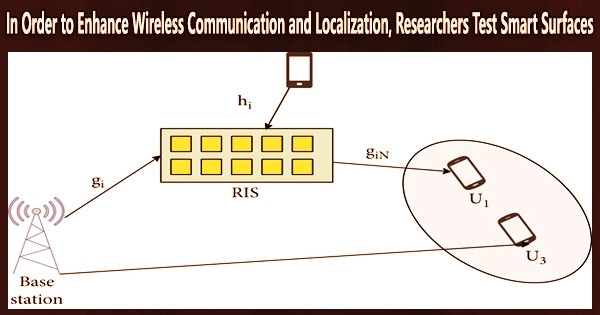Anyone with a cell phone has experienced dropped calls or dead air due to an unexpected loss of service. Or worse, the location pin drops on the navigation app.
Researchers at UBC Okanagan are investigating “smart” surfaces that can bounce signals from a tower to customers to improve the link in order to find ways to increase cell phone connectivity and localization capabilities. Using reflecting materials on windows or panels on buildings in crowded metropolitan areas creates a smart surface.
The goal, says Dr. Anas Chaaban, is to improve wireless services for millions of Canadians. Currently, he says, there are more than 12,000 wireless antenna towers. And yet, a lack of cell service is a common problem.
“The increasing use of mobile technologies across the world is necessitating research that unlocks potential new approaches within our existing infrastructure,” says Dr. Chaaban, an Assistant Professor at UBC Okanagan’s School of Engineering. “Even though cellphone towers line the rooftops of major cities, and handle the data and phone traffic of millions of Canadians each day, there are still gaps in service.”
Dr. Chaaban and his team at UBCO’s Communication Theory Lab have developed transmission schemes that would incorporate reconfigurable intelligent surfaces and smart surfaces throughout urban centers to serve as reflectors within existing wireless networks.
We simulated the proposed localization protocol and demonstrated its effectiveness in an urban micro-cell street canyon scenario as an example. And the protocol works for multiple users simultaneously. Even in areas with intermittent service, data can be shared and users can be located and enjoy a reliable connection.
Dr. Anas Chaaban
A panel comprising numerous separate reflective elements, each of which can modify and reflect an incoming signal, makes up a reconfigurable intelligent surface (RIS). The RIS can strengthen the connection or produce signals that are helpful for detecting users in the network by controlling this alteration with an electrical signal.
A new localization mechanism that the researchers created allows a RIS to function as a satellite to increase accuracy. By making a surface smart, it can bounce signals to cell phones which in turn can use these signals to generate an accurate estimate of location, he says.
When using optimal location-aware transmission techniques that also make use of the RIS, an accurate location estimate is helpful for both location services and for improving transmission from the tower to the phone.
“Users never expect to have a call drop, and they also expect lightning-fast data speeds,” he says. “But to accomplish this, the networks require constant updating.”
The researchers used several modulated RISs, which enable the simultaneous localisation of several users with minimal complexity for each RIS, to test their theory. Also, they created and evaluated RIS-enabled transmission strategies that outperform current strategies.
“We simulated the proposed localization protocol and demonstrated its effectiveness in an urban micro-cell street canyon scenario as an example,” he explains. “And the protocol works for multiple users simultaneously. Even in areas with intermittent service, data can be shared and users can be located and enjoy a reliable connection.”





